If you’ve been to Bayside Bowl in Portland, you’ve probably seen Zack Kane.
He was most likely making his way down the wooden plank between gutters, deliberate but unhurried, his mop of curls bouncing with each step, before slipping out of sight to dislodge a pin or retrieve a ball – a problem he probably detected long before the bowler realized there was one.

He admits it’s an unconventional approach to the job. Most pinsetter mechanics stay behind the lanes waiting for a call saying something went wrong.
“I came up with my own method,” said Kane, 34.
From up front, he said, he can see everything. Plus, that’s where all the people are.
“Sitting back here by yourself is boring,” he said last week while replacing a roller on the ball return for Lane 7, two days before the world’s best bowlers would converge on the 12-lane alley.
By that time, he wouldn’t have a choice. Instead of his usual routine in the front of the house – “drinking coffee, looking cranky,” he said – when the professional bowlers were on the lanes, his job would be to sit by the pinsetters and watch.
For the past month, Kane has been preparing for the Professional Bowlers Association’s League Elias Cup. Televised on ESPN, it’s the first time the PBA Tour has stopped in Maine. He’s been cleaning the lanes, replacing worn-out parts and figuring out what spares he’d need to have on hand.
“If I’m doing my job right. I should just be sitting around doing nothing,” he said. “That’s the dream, anyway.”
But once the cameras are rolling, even doing nothing will be nerve-wracking. Kane is confident his machines are as prepared as they can be, particularly on lanes 6 and 7, where all the games would take place.
“They’re happy. They’re lubricated,” he said.
Still, things can go wrong.
“I’m not particularly concerned,” he said, “I’m just nervous.”
LEFT ART SCHOOL, LEARNED MACHINES
Bayside hired Kane four years ago – about six months after the alley opened, propelling the neighborhood’s transition from industrial to up-and-coming and popularizing bowling among the masses on Portland’s peninsula.
A sculpture minor at Plymouth State University, he had come to Portland from New Hampshire to pursue a master’s at Maine College of Art. A year and a half into the two-year program, he decided it wasn’t worth his time.
“I’m kind of hard-headed,” he explained.
He stayed in town and ended up working at boatyards, one of which had a team in the Bowl Portland league that he joined, before it moved from Yankee Lanes on Riverside Street to Bayside.
When he left that job and was looking for work, he walked into the new bowling alley and asked if they had anything.
Most of what Kane knew about mechanics he learned in his garage growing up in Conway.
“My father taught me how to turn wrenches and work on things – how tight is too tight and the proper tool for the job,” he said.
They started with bicycles before he got into motorcycles, despite his mother’s disapproval. He learned about engines from the Rambler station wagon he had in high school. It helped him work his way up at the boatyards in Portland, where he started as a painter and ended up operating heavy equipment with high-pressure hydraulic systems for hauling boats out of the water.
“This stuff is far more basic,” he said about the pinsetters.
With more than 2,000 moving parts on each machine, they’re also a lot more intricate. Figuring them out has turned into a career for Kane, who was hired at Bayside to fix pin jams and now has a business card that says “facilities manager.” He prefers chief mechanic.
“These machines are very unique and particular,” he said. “I have an appreciation for how they were designed and how durable they are, the paths you have to follow to find the cause of problems. There’s always a path.”
Problem-solving is what he likes best about the job – even more than the cheers he gets from bowlers as he walks back down between the gutters after resetting the pins, though he’s not above throwing his arms up triumphantly in response.
But Kane doesn’t claim to be an expert on the machines.
“I’m always learning,” he said.
THE PROS BOWL, CROWD GOES WILD
The Elias Cup competition would be his biggest test yet. The playoffs began Saturday, when the bowling alley was transformed into a stage for featuring the elite athletes.
The raised seating area normally reserved for watching friends and eating french fries had turned into a TV studio where broadcasters in suits recorded the play-by-play, surrounded by a production team wearing headsets and black clothes.
Bright lights lit lanes 6 and 7, and bleachers were set up on either side, one set of them for Bowl Portland players and the other for the 100 fastidious fans who made sure to get tickets before they sold out a month ago.
“That’s more like our normal crowd,” PBA Commissioner Tom Clark said about the non-league section, a group marked by gray hair and glasses that clapped politely for strikes and spares.
“That’s more like our student section,” he said about the Bowl Portland players, who stood up the entire tournament, most with orange plastic cups of beer in hand. Aside from the few seconds of silence before the bowlers released the ball, they cheered and chanted nonstop.
Initially, Clark said, the unexpected enthusiasm threw off the bowlers a bit, but they more than got used it and got into it themselves, high-fiving the fans and chanting along with them.
“The crowd is the best crowd we’ve had in 15 years,” Clark said.
SMOOTH SAILING, 10 FRAMES TO GO
Back in the shop, their cheers could still be heard above the crashing pins and clanging metal parts, but the miked-up announcer had been reduced to a muffled drone.
Kane, in his trademark outfit of a button-down shirt, Carhartt pants and Adidas sneakers, sat on top of the Lane 6 pinsetter watching the competition on a television screen set up on a machine two lanes down, the back of which was covered with the marker-drawn signatures of the pros.
Through a headset, he took instructions from the front of the house, then pointed to the pinsetters, sending another mechanic, Evan Williams, climbing down one machine and up another, flicking switches and watching the parts turn.
Things had been running smoothly.
“Very, very, very happy,” Kane said. “So far everything has gone really well because of the time and preparation we put into it.”
But he wouldn’t celebrate until after the competition was decided and the cameras were turned off.
By Sunday afternoon, it had come down to two teams, L.A. X and the Silver Lake Atom Splitters.
They had played four different competitions – head-to-head singles, doubles, trios and, finally, both teams of five bowling a string together.
After the first three games, the score was 2-1, Atom Splitters. If L.A. X won the next contest, the tie would be decided by a one-ball roll-off.
Before the balls started rolling, Kane stood up and stretched, twisting his torso and extending his arms. He was 10 frames away from the end of his workday and the biggest match of his career.
He climbed to the front of the machine on Lane 7, while Williams stood by the pinsetter on Lane 6.
“One, two, three, go,” he said, and the triangular pin tables lowered to the lanes.
“You’re all set,” he said into the headset.
A SCARE … AND THEN DAY IS DONE
Back perched on Lane 6, he stared at the TV as the bowling began.
Though he was watching mostly for problems with his machines, he couldn’t help but get into the game, pumping his fists for strikes and shaking his head at tough splits.
“You want a re-rack for that?” he said with a laugh, when one bowler left two pins standing on both sides of the formation.
He stopped laughing when he saw one of the bowlers, Jason Belmonte, on screen pointing down the lane.
Nothing was coming through the headset. He had no idea what was wrong.
Williams popped up and climbed over to Lane 7. Only nine pins had dropped.
He ran the machine and reset the pins. All 10 showed up this time.
It was an easy fix, but a stressful moment – the worst thing that had happened all weekend, and Kane was grateful for that.
The 10th frame had come and the last bowler, Dick Allen, was up for the Atom Splitters. In the trio match just before, his team had bowled nine strikes in a row, when Allen was up for the final frame. He rolled two more strikes, followed by a seven, ruining the perfect game and losing a $10,000 bonus for his team.
In the last of the four competitions, Allen only needed one strike to clinch the win. When he rolled the ball and 10 pins fell, he turned around to his teammates, who lifted him up by the legs and patted him on the head, while the crowd celebrated with them.
After Allen threw his second ball to officially end the game, Kane pulled off his headset, got up and turned off the machine.
“Beautiful,” he said.
Send questions/comments to the editors.


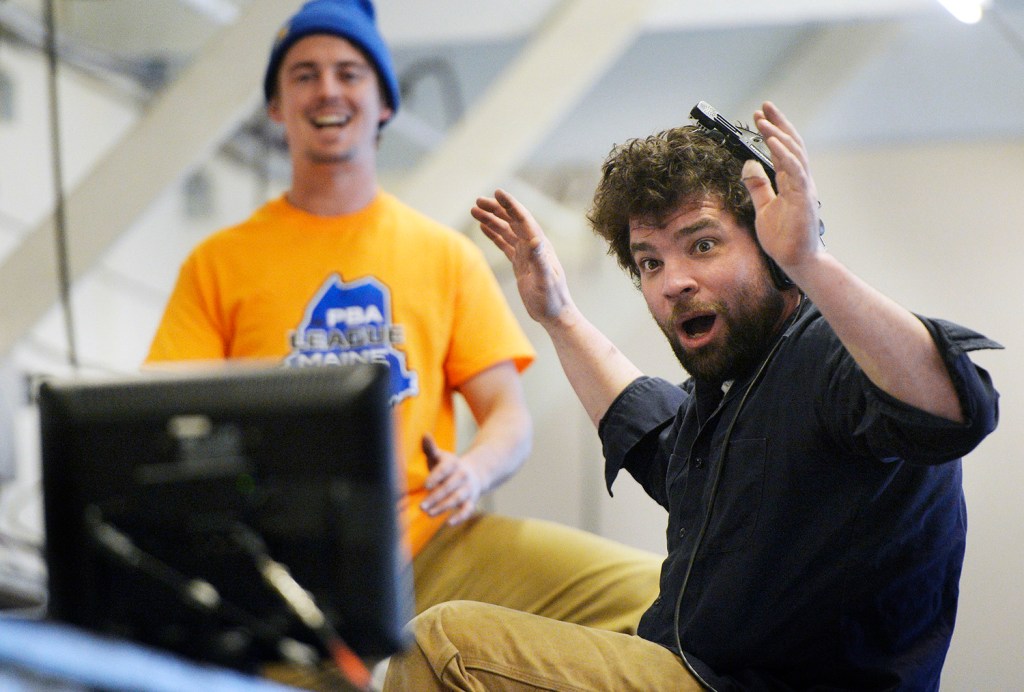
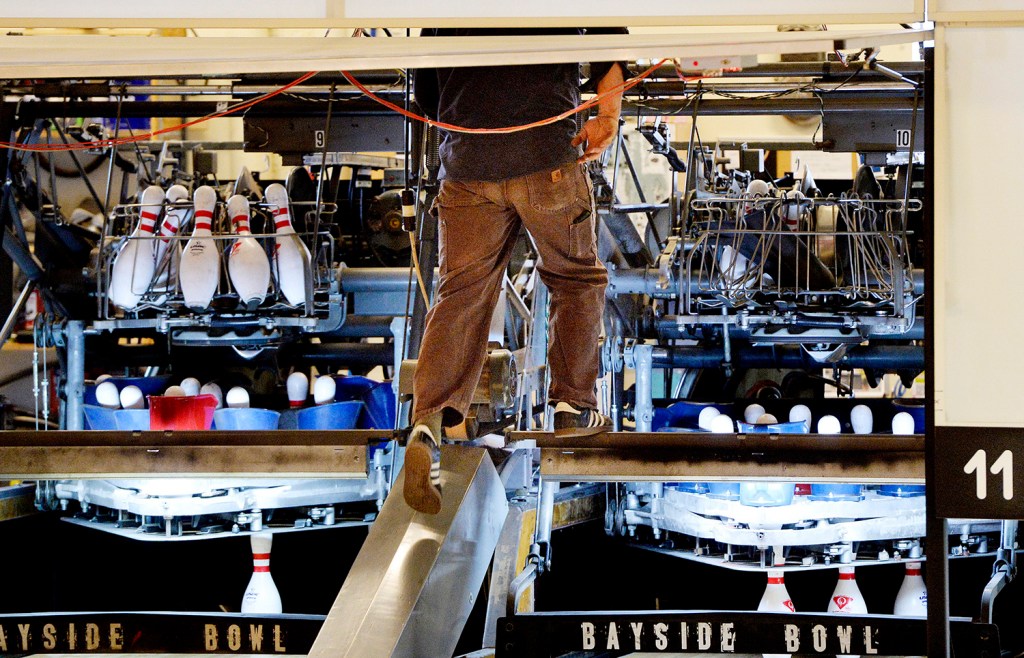
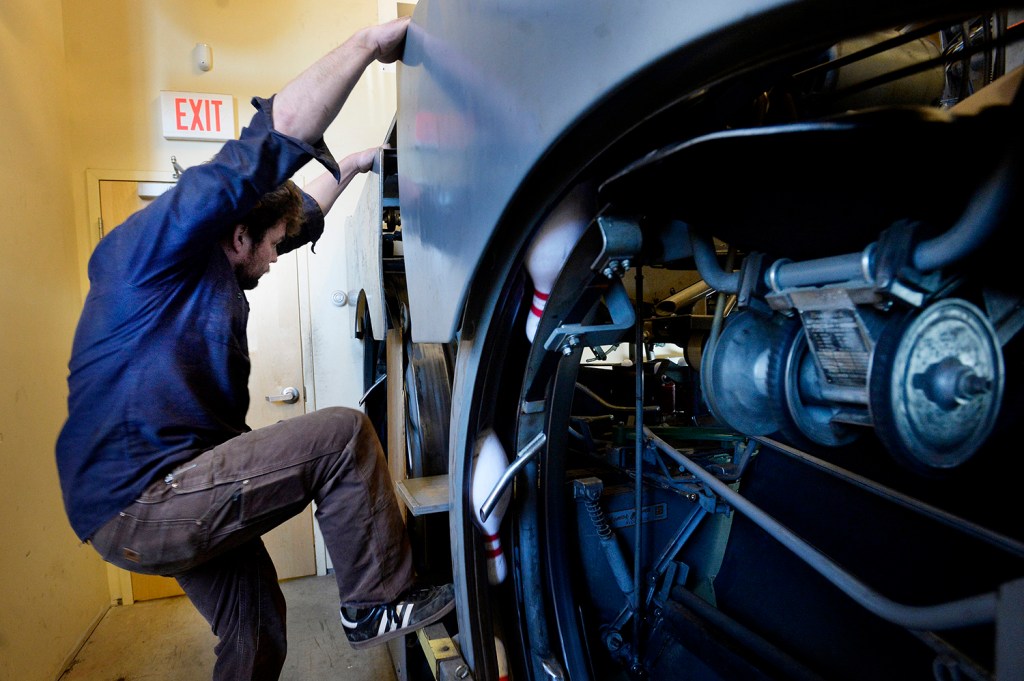
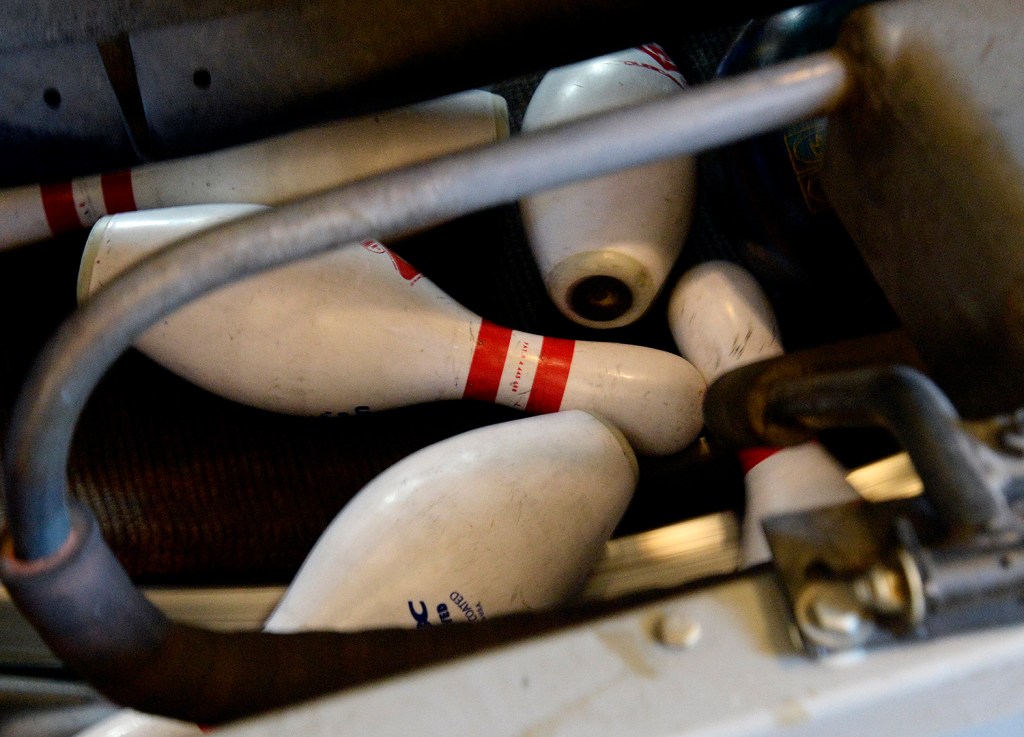
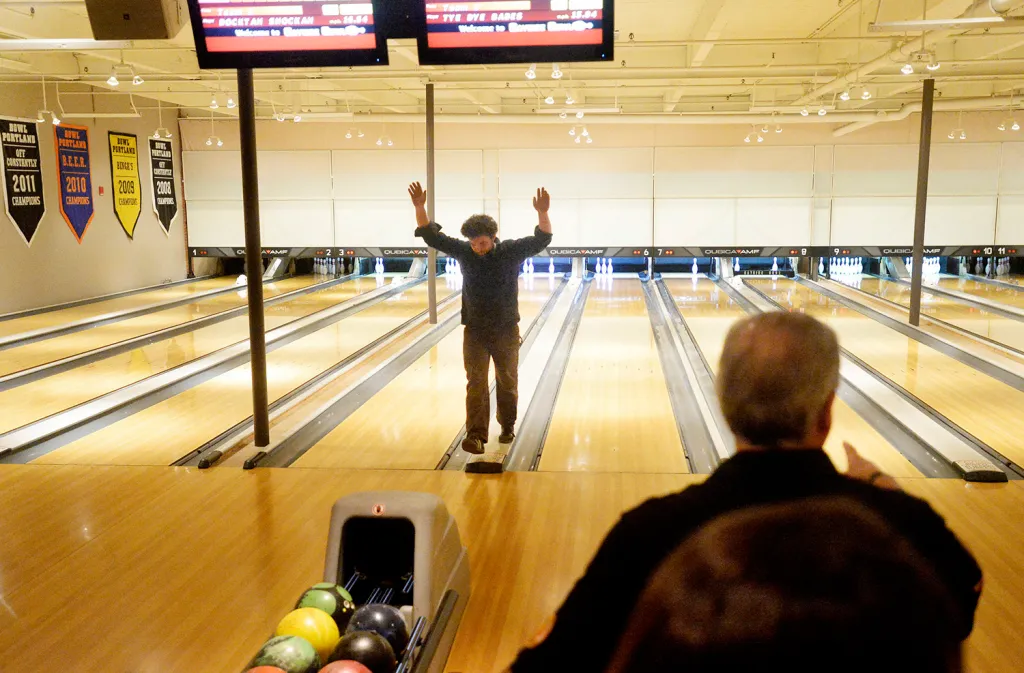

Success. Please wait for the page to reload. If the page does not reload within 5 seconds, please refresh the page.
Enter your email and password to access comments.
Hi, to comment on stories you must . This profile is in addition to your subscription and website login.
Already have a commenting profile? .
Invalid username/password.
Please check your email to confirm and complete your registration.
Only subscribers are eligible to post comments. Please subscribe or login first for digital access. Here’s why.
Use the form below to reset your password. When you've submitted your account email, we will send an email with a reset code.